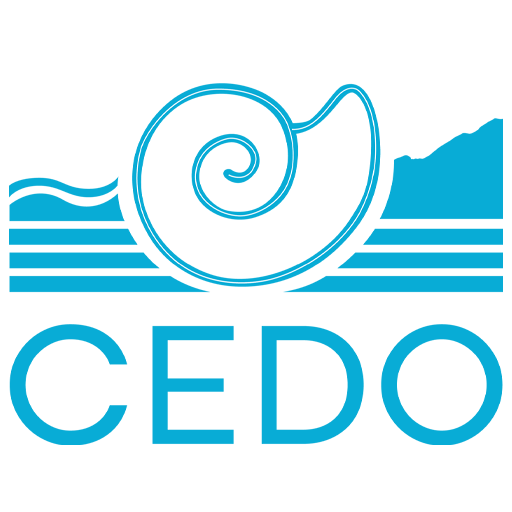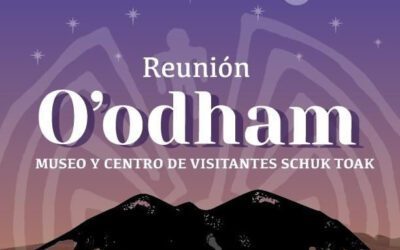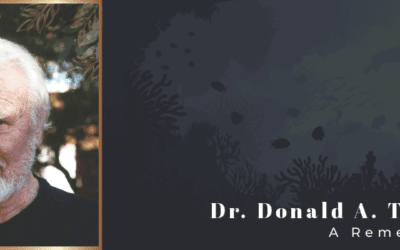[vc_row][vc_column][vc_separator][vc_column_text]By: Alberto Mellado, Erica Barnett, Laura Monti and Gary Paul Nabhan[/vc_column_text][/vc_column][/vc_row][vc_row][vc_column width=”1/2″][vc_single_image image=”1600″ img_size=”full” onclick=”link_image”][/vc_column][vc_column width=”1/2″][vc_column_text]On a breezy winter day along the Sonoran coast of the Sea of Cortes in Mexico, six of us went wading into fragmented stands of mangroves in backwater lagoons.
Our binational, multicultural team had come out to count the number of red mangrove seedlings surviving in our restoration plots along the shores of coastal lagoons, and assess the quantity of seeds developing in eelgrass mats thrown upon onto the beaches during the last windstorm.[/vc_column_text][/vc_column][/vc_row][vc_row][vc_column width=”1/2″][vc_column_text]For us, these humble little plants were not the only things that Comcaac (Seri Indian) teams of 10 young men and women had sown two months before that windy day in mid-February.
They had also sown hope: hope that the plants might survive treacherous currents, hurricane fringe storms, predation by herbivores, and drought; that they could endure ocean level rising to buffer their nursing grounds for shellfish and finfish from invasion and erosion; and that they could sequester enough “blue carbon” to reduce if not reverse the march of climate change.
The coastal communities and fisheries of the Sea of Cortés— known to many Americans as the Gulf of California—are facing several threats associated with climate change. These may include higher sea levels; greater salinity in coastal groundwater where aquifers have already been overpumped; acidification of the seawaters where fishes breed; huge shifts in the volumes of harvestable lobsters and abalones; and delayed or disrupted migrations and reproduction of already threatened sea turtles and whales.[/vc_column_text][/vc_column][vc_column width=”1/2″][vc_single_image image=”1603″ img_size=”full”][/vc_column][/vc_row][vc_row][vc_column width=”1/2″][vc_column_text]Of all these challenges to human and wildlife communities, perhaps the rising of ocean levels and the concomitant loss of coastal habitats seems most daunting, if not intractable. For the Pacific coast of southwestern North America in general, the rapid loss of ice sheets on Antarctica could drive rates of sea-level rise above 50 mm/year (2 inches/year) by the end of the century. Under the most extreme scenarios, that could potentially lead to a potential sea-level rise exceeding 10 feet by 2200. This accelerated rate of sea-level rise would be about 30-40 times faster than the sea-level rise experienced over the last century.
At the same time, the vertical rise in ocean levels would have exacerbated “horizontal” effects along significant portions of the Gulf’s coastlines of Sonora and Baja California. The northern end of this inland Sea or “Upper Gulf” already experiences a 32-foot tidal range, the third largest in North America and two-thirds of that suffered in the Bay of Fundy, suggesting that the rising sea level would eat far further into the coastlands than in most places along the Pacific coast of Mexico and the U.S.[/vc_column_text][/vc_column][vc_column width=”1/2″][vc_single_image image=”1602″ img_size=”full” onclick=”link_image”][/vc_column][/vc_row][vc_row][vc_column][vc_column_text]This would be particularly devastating to barrier islands and peninsulas like those of Estero Sargento and Estero de la Cruz (near Kino Bay) that protect both the Sonoran coast and the hypersaline lagoons behind them from tropical storms and hurricanes. These backwater mangrove lagoons and adjacent beds or “pastures” of eelgrass are essential to the reproduction and survival of both shellfish and finfish that provide the economic basis for most costal fishing communities. And because virtually every other stretch of offshore waters along the Sonora and Baja California coasts has been repeatedly dredged and trawled over the last five decades, the undredged lagoon and shoals of the Comcaac indigenous nation may be considered “blue carbon’s last stand” in the midriff of the Gulf of California.[/vc_column_text][vc_single_image image=”1605″ img_size=”full” onclick=”link_image”][/vc_column][/vc_row][vc_row][vc_column][vc_column_text]The annual economic median value of these fisheries is at minimum valued above US $37,500 per hectare of mangrove fringe. That value –estimated a decade ago– falls at the higher end of values previously calculated values worldwide for all mangrove ecosystem services together.
It is also many times higher than that for other nursery grounds for fish and shellfish remaining in the Sea of Cortés. That is because coastal development, dredging, chemical pollution and other human activities have diminished the size and density of these nursery grounds everywhere else in the Gulf, leaving just four mangrove stands within Comcaac territory as the northernmost and last of any of significant size on the Sonoran coast.[/vc_column_text][/vc_column][/vc_row][vc_row][vc_column][vc_column_text]As we waded along, counting the number of still-surviving red transplants of red mangroves in the shallow waters of two lagoons along the shores of the Comcaac homeland, we were heartened to find that the vast majority of these seedlings had survived several months of rough weather. We were hopeful that if such survival rates persisted as time went on, the patches of red mangroves we transplanted could “stitch together” the edges of mangrove buffer zones that protect the Comcaac coast from inclement weather and further habitat fragmentation. With as many of five rows of transplants rooting in the shallow intertidal waters and holding sediments in place, the transplants were forming a living bandage over storm-wounded areas that had served as nick points for erosion and loss of vegetative cover.[/vc_column_text][/vc_column][/vc_row][vc_row][vc_column width=”1/2″][vc_single_image image=”1604″ img_size=”full” onclick=”link_image”][vc_single_image image=”1601″ img_size=”full” onclick=”link_image”][/vc_column][vc_column width=”1/2″][vc_column_text]We had to be extremely strategic in determining where to place our investment in these living, breathing bandages of blue carbon. Both Sonora and Baja California are projected to receive an increase in total annual precipitation as climate change advances, but much of that rain will come with hurricane fringe storms that cause flashfloods in the many intermittent and ephemeral streams that flow into the Gulf.
During such tropical storms, two to eight inches of rain may drop in the matter of two days, literally reworking the routes to the sea taken by streams overflowing their banks. At least twice in the last decade, the indigenous Comcaac communities have suffered flooding of their villages from inland rains.
One of these catastrophic events sent floodwaters three feet deep through Desemboque del Sur, damaging the walls, floors and appliances in virtually every house in the village. These floods also destroy bridges and elevated roads leading into these remote coastal villages, such that both villages have gone as many as eight days in the aftermath of a storm without the arrival of medical care, food or water from inland sources.[/vc_column_text][/vc_column][/vc_row][vc_row][vc_column][vc_column_text]Fortunately, dozens of Comcaac community members have begun to engage in beneficial actions which will not only serve to protect their villages from storm surges and flashfloods, but ones which may ultimately slow or reverse sea level rises if combined with similar actions around the world. The transplanting of thousands red mangrove seedlings to shore up and restore vegetation to vulnerable “nick points” along barrier islands and in bays adjacent to villages will serve as buffers to protect these natural refuges. Farther out into the bays and swale-like channels of the Canal del Infiernillo, the transplanting of eelgrass to form more extensive pastures for sea turtles, blue-eating crabs and finfish will serve as an additional buffer from storms.[/vc_column_text][/vc_column][/vc_row][vc_row][vc_column width=”1/2″][vc_column_text]The Comcaac community members of both villages recognize the “promise of blue carbon” as a potential future source of funds to stabilize their now-vulnerable economy in the face of daunting climatic challenges. But in the meantime, the restoration of mangroves and eelgrass for the food, income and protective buffers they provide are sufficient to justify their community engagement.
https://www.garynabhan.com/news/2021/03/sowing-the-promise-of-blue-carbon-on-the-watery-edge-of-a-blue-desert/[/vc_column_text][/vc_column][vc_column width=”1/2″][vc_single_image image=”1606″ img_size=”full” onclick=”link_image”][/vc_column][/vc_row][vc_row][vc_column][vc_separator style=”shadow” border_width=”2″][vcj_team_member image=”1599″ name=”About the Author:” layout=”style3″ image_ratio=”portrait” color_name=”#ca972e”]Gary Nabhan
Gary Paul Nabhan (born 1952) is an Agricultural Ecologist, Ethnobotanist, Ecumenical Franciscan Brother, and author whose work has focused primarily on the interaction of biodiversity and cultural diversity of the arid binational Southwest. He is considered a pioneer in the local food movement and the heirloom seed saving movement. A first-generation Lebanese American, Nabhan was raised in Gary, Indiana. While excelling in some of his studies, he dropped out of high school, and then had the opportunity to attend Cornell College in Mt. Vernon, Iowa for 18 months. During that time, he worked at the headquarters for the first Earth Day for two stints in Washington DC.[/vcj_team_member][vc_column_text]He then transferred to Prescott College in Arizona, earning a B.A. in Environmental Biology in 1974, and has remained in-state ever since. He has an M.S. in plant sciences (horticulture) from the University of Arizona (1978), and a Ph.D. in the interdisciplinary arid lands resource sciences also at the University of Arizona (“Papago Fields: Arid Lands Ethnobotany and Agricultural Ecology”, 1983). During this time he started working with, and learning from farmers and foragers in several indigenous communities on both sides of the U.S./Mexico border.
He co-founded Native Seeds/SEARCH while working at the University of Arizona, with both organizations co-hosting the first-ever national conference on community-based seed banks and heirloom seed saving. Native Seeds is a non-profit conservation organization which works to preserve place-based Southwestern agricultural plants as well as knowledge of their uses (1982-1993). He then served as director of conservation, research and collections at both the Desert Botanical Garden (1986-1993) and Arizona-Sonora Desert Museum (1993-2000), where he did the research to help Secretary Bruce Babbitt create Ironwood Forest National Monument.
He then became founding director of the Center for Sustainable Environments at Northern Arizona University in Flagstaff, AZ (2000-2008). In 2008 he moved back south to Tucson and joined the University of Arizona faculty as a research social scientist with the Southwest Center, where he now serves as the Kellogg Endowed Chair in Southwestern Borderlands Food and Water Security. There, he founded the Center for Regional Food Studies and catalyzed the initiative to have UNESCO designate Tucson as the first City of Gastronomy in the U.S.
He is currently married to cultural ecologist and indigenous health activist Laurie Monti (formerly of the Christensen Fund and four universities) and lives in Patagonia, Arizona on a five-acre homestead to the southwest of Tucson. He farms a diverse set of heirloom fruit and nut varieties from the Spanish Mission era and from the Middle Eastern homelands of his Lebanese ancestors, as well as heritage grains and beans adapted to arid climates.[/vc_column_text][/vc_column][/vc_row][vc_row][vc_column][vc_column_text][ctct form=”1153″ show_title=”false”][/vc_column_text][/vc_column][/vc_row]









0 Comments